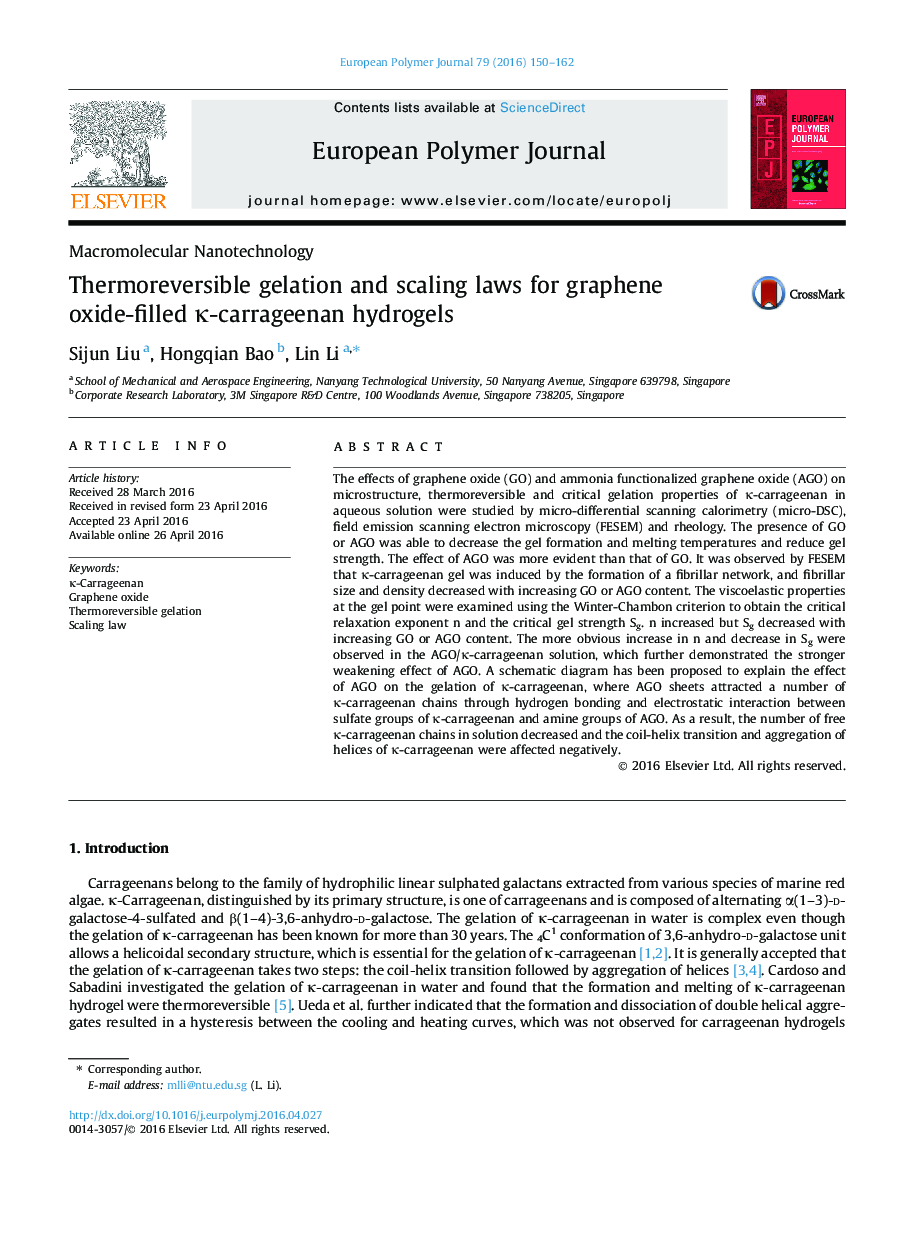| کد مقاله | کد نشریه | سال انتشار | مقاله انگلیسی | نسخه تمام متن |
|---|---|---|---|---|
| 1401325 | 1501356 | 2016 | 13 صفحه PDF | دانلود رایگان |
• Thermoreversible gelation and rheological scaling laws for κ-carrageenan hydrogels filled with GO and AGO have been studied.
• AGO showed a stronger weakening effect than GO on the gelation temperature and gel strength.
• Field emission scanning electron microscopy confirmed the formation of a fibrillar network structure.
• The Winter-Chambon criterion could be applied to the GO/κ-carrageenan and AGO/κ-carrageenan hydrogels.
• At the gel point, AGO exhibited a more significant effect on n and Sg than GO.
The effects of graphene oxide (GO) and ammonia functionalized graphene oxide (AGO) on microstructure, thermoreversible and critical gelation properties of κ-carrageenan in aqueous solution were studied by micro-differential scanning calorimetry (micro-DSC), field emission scanning electron microscopy (FESEM) and rheology. The presence of GO or AGO was able to decrease the gel formation and melting temperatures and reduce gel strength. The effect of AGO was more evident than that of GO. It was observed by FESEM that κ-carrageenan gel was induced by the formation of a fibrillar network, and fibrillar size and density decreased with increasing GO or AGO content. The viscoelastic properties at the gel point were examined using the Winter-Chambon criterion to obtain the critical relaxation exponent n and the critical gel strength Sg. n increased but Sg decreased with increasing GO or AGO content. The more obvious increase in n and decrease in Sg were observed in the AGO/κ-carrageenan solution, which further demonstrated the stronger weakening effect of AGO. A schematic diagram has been proposed to explain the effect of AGO on the gelation of κ-carrageenan, where AGO sheets attracted a number of κ-carrageenan chains through hydrogen bonding and electrostatic interaction between sulfate groups of κ-carrageenan and amine groups of AGO. As a result, the number of free κ-carrageenan chains in solution decreased and the coil-helix transition and aggregation of helices of κ-carrageenan were affected negatively.
Figure optionsDownload as PowerPoint slide
Journal: European Polymer Journal - Volume 79, June 2016, Pages 150–162
